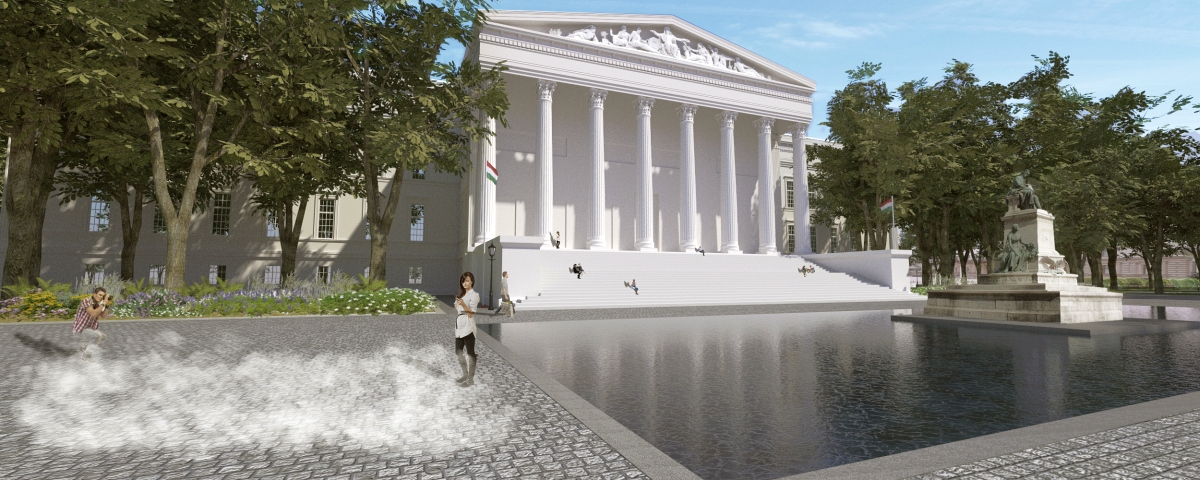award: Garden of the Year Grand Prize 2022 – Landscape Architecture Excellence Award 2023
location: agglomeration of Budapest
designers Balázs ALMÁSI, Roland SZUROVECZ
year of design: 2021
execution: 2021-2022
contractor: ProLand Kertépítészeti Kft.
area: 1400 m2
photos by Balázs ALMÁSI, Eszter MILLER, Roland SZUROVECZ
“The resulting design is a state-of-the-art, ground-breaking work that responds perfectly to the challenges of global warming for garden design, especially for the use of plants in landscape architecture. It is perfectly adapted to the sloping terrain. The views and landscapes on offer, the protected environment, are made part of the garden composition. Its planting complements and continues the flora of the adjacent protected area, and is aesthetically highly accomplished.”
Extract from the jury’s assessment

The eye-catching end result is mainly due to the extraordinary attitude of the client couple, who have always the utmost confidence throughout the design and construction process and have always been open to new ideas. The concept of the garden, if I had to put it in two words, would be: “natural and fitting”. The aim was to create a stylish garden in paradise with a natural feel and an exciting variety. We created a transition between the nature reserve behind the back boundary and the artificial world of the building and the settlement.

photo: Eszter Miller
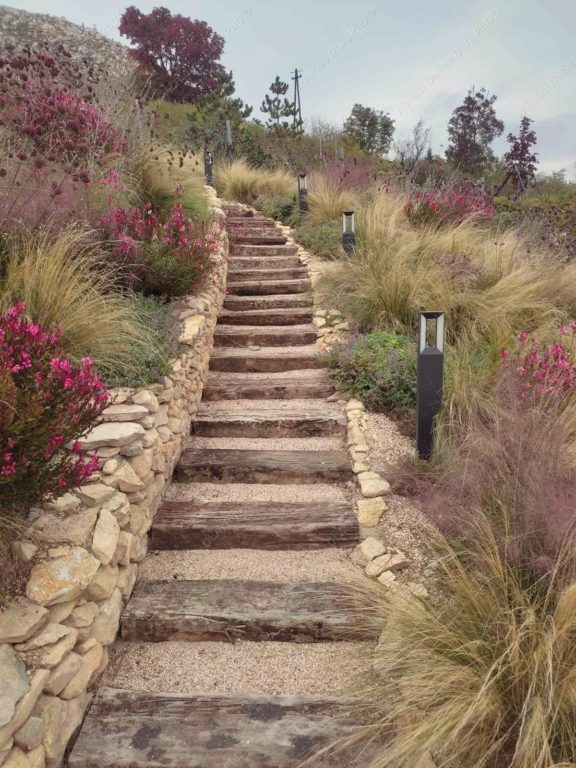
photo: Roland Szurovecz
One of the keys to creating a romantic atmosphere was careful landscaping and consistent recycling of local stone. We created a link with the distinctive character of the surrounding hills by transforming the formerly very rigid terraced row, shaping the dimbe-hill landforms in the garden. Leaving the aura of the house, the exploratory walkway – or perhaps more aptly termed staircase – gradually blends into the garden, which is blessed with natural rolling hills. Thanks to the constant presence of the designer during its construction, the harmony of the undulating surface changed from day to day, until it finally took on the image we see today. The result was that the spatiality of the site became the dominant feature, rather than the perfection of form on the surface. This can be felt when walking through the garden. Looking up from the house, the area is an excitingly inviting place, as the dimbe-hill design conceals some of its details, enticing the visitor to explore further upwards.
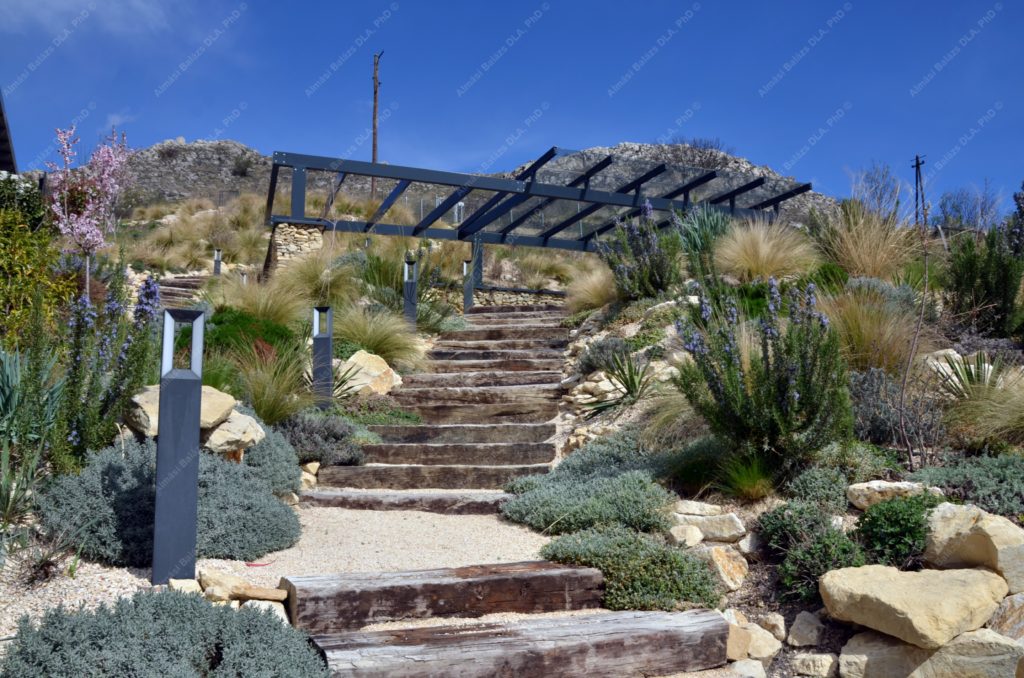
photo by Balázs Almási
Walking through the garden, step by step, you will discover more and more secret details, which, thanks to the special planting, will reveal a never-changing variety of landscapes.

A duality of nature and man-made landscape permeates the garden. Behind the plot, the wild world of the hillside nature reserve is also moved into the garden. A wildflower meadow with a seed mix of dominant species from the rocky slope steppe provides a natural setting in the upper third of the plot. This area will need a year or two to reach a stable semi-natural state, but it is already very richly ornamental.
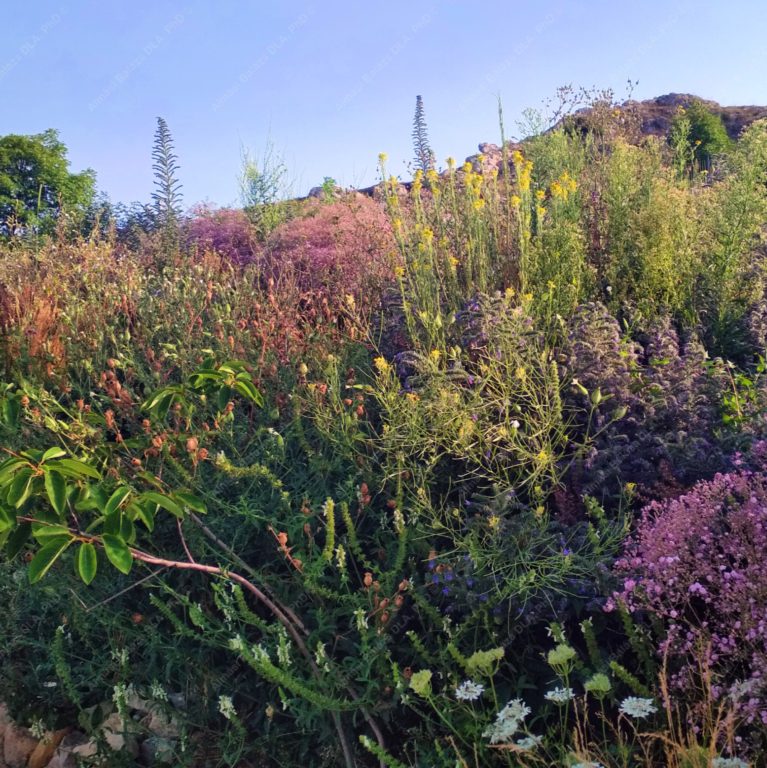
photo by Balázs Almási
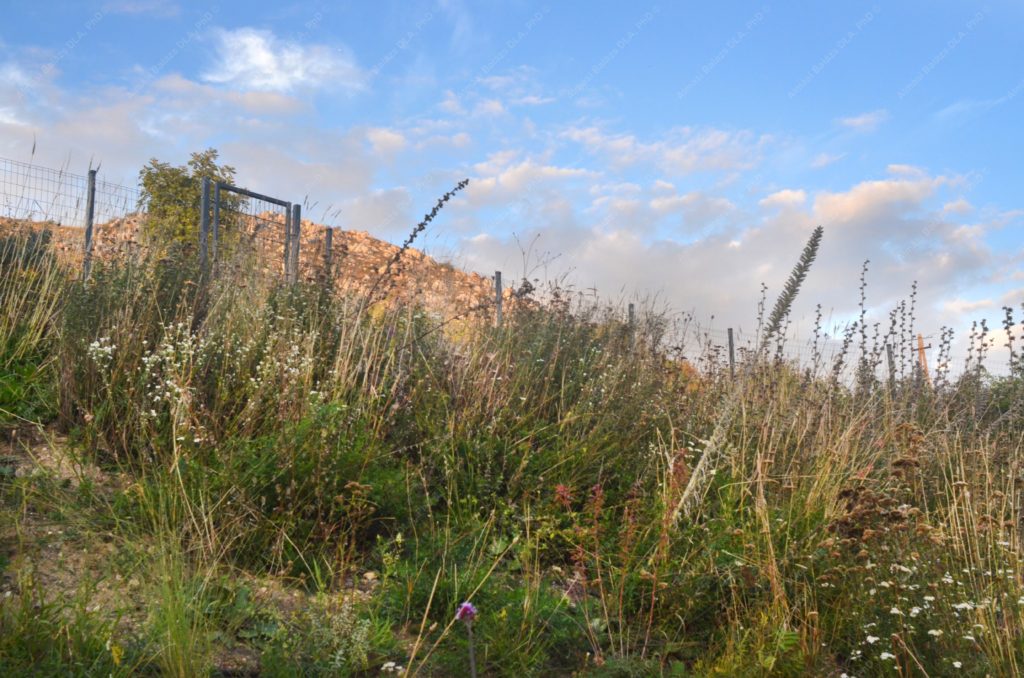
photo by Balázs Almási
Approaching the house, in an intermediate zone, ornamental perennials have been added among the wildflowers to provide a transition to the colourful prairie perennial planting of the upper central section.
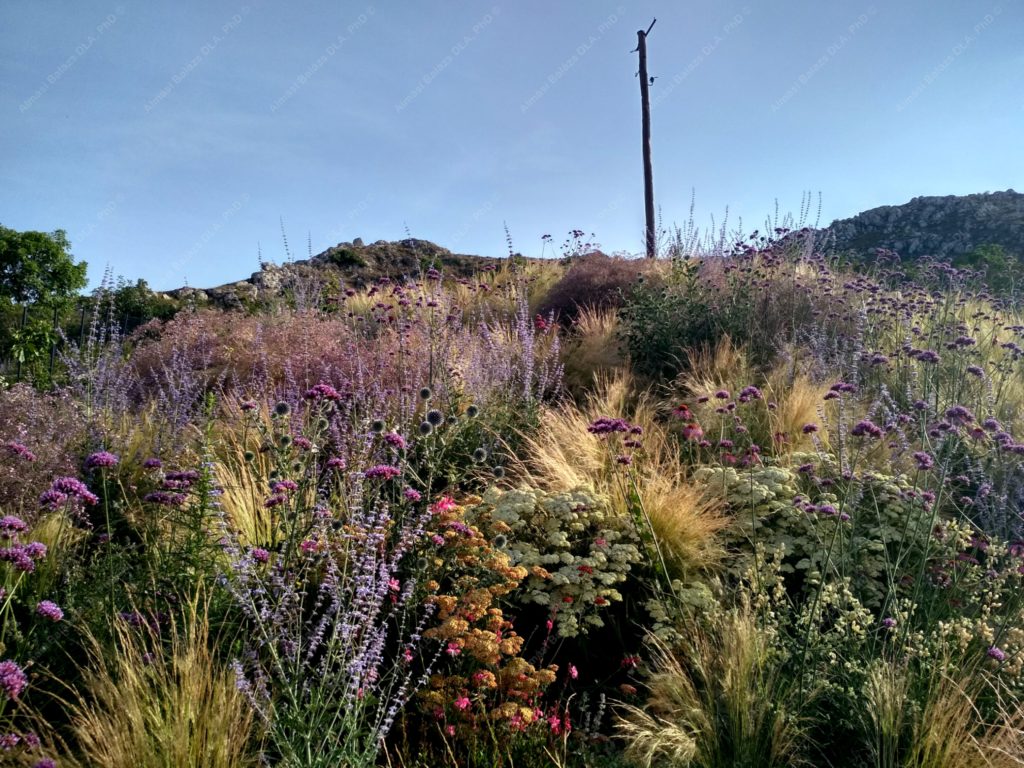
photo by Balázs Almási
Thanks to the carefully selected perennial species and a special planting method that is still rarely used in Hungary, this meadow in bloom has a natural look as if it has been here forever. Below the central rest area with its breathtaking panoramic views, where a jacuzzi, a fireplace and a lounge share the space, a drought-tolerant rocky plant composition with a more Mediterranean feel spreads over a vast surface. A rustic solid wood staircase leads down to the lower terrace, where a perfectly equipped outdoor kitchen is also located.
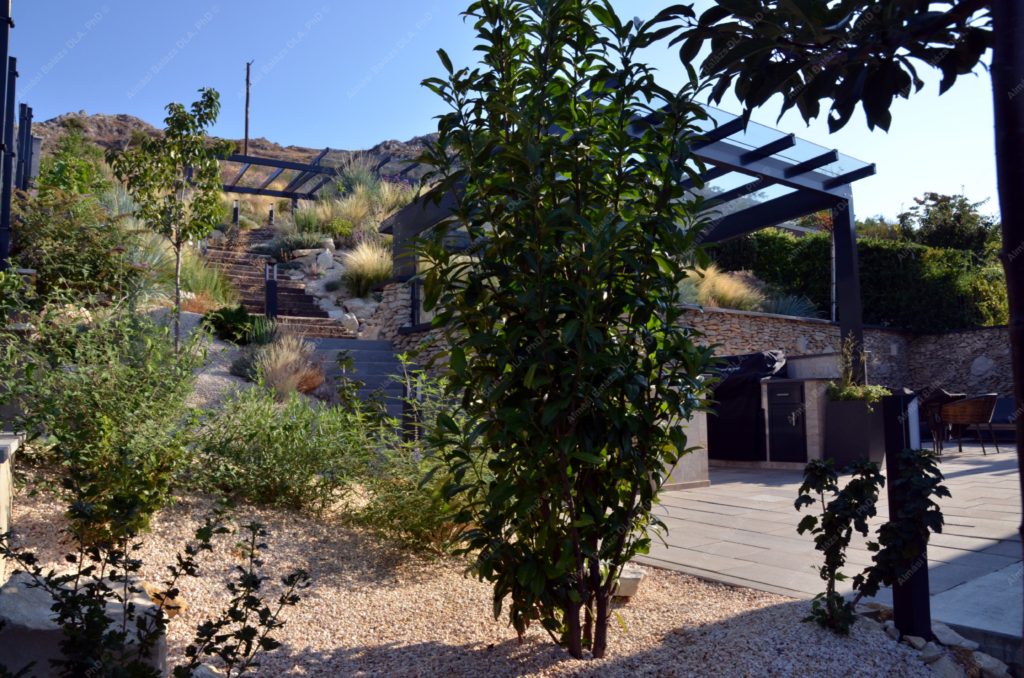
photo by Balázs Almási
This is also the beginning of the side garden, which, instead of the usual formal order of the plantation, provides a layout and appearance similar to that of an ornamental garden, with a variety of crops that can be grown in the garden. Among the various fruit trees and shrubs and herbs, opposite the entrance from the kitchen, we have also built a raised bed where the most important vegetables can be grown. From here, the spectacular staircase leading to the street gate is once again lined with ornamental plants. At the base of the steep, rocky front garden slope, a tiered garden cascade has been added, adding to the ambience of the natural look flower meadow with its soothing splash.

photo by Balázs Almási
The garden, unusually for Hungary, does not include mown lawns despite the relatively large plot. The perennials used over the large surface area are drip-irrigated and selected to tolerate the extreme conditions of the dry southern exposure slope.
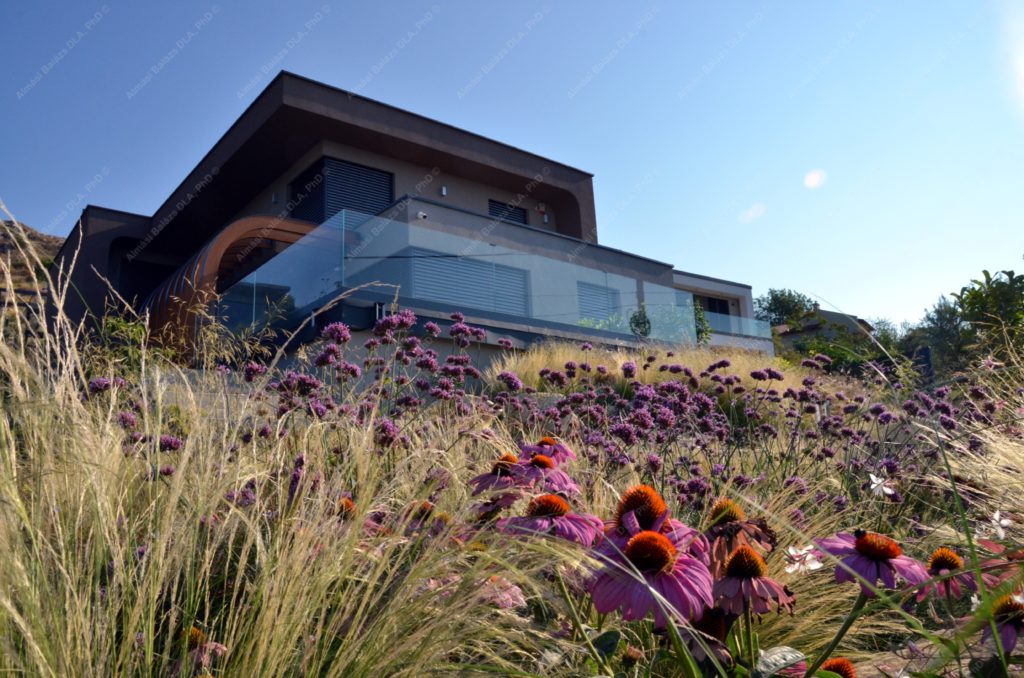
And the native surface in the upper third of the garden, once established, will require almost no supplementary watering. All year round, the perennial flowers are being in constant rotation, giving us a cavalcade of dynamically changing, harmonious colour compositions. In the first year, the lush floral arrangement attracted a huge number of pollinators and colourful butterflies, and we even moved out some decayed tree trunks to create a diverse fauna.

This garden thus points the way to a more sustainable future, not only through its water-saving solution or its range of locally grown crops, but also through its extraordinary natural diversity.
